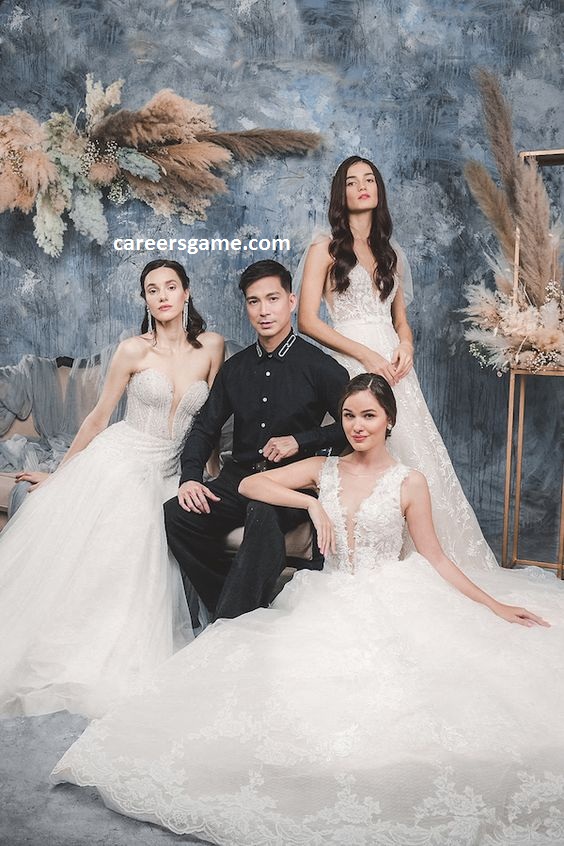The Filipino wedding dress is a vibrant expression of culture, heritage, and artistry. It encapsulates the rich traditions of the Philippines while celebrating the individuality of each bride. From the intricacies of its design to the historical significance behind the attire, the Filipino wedding dress is not just clothing; it represents love, unity, and the melding of families. This article explores the history, styles, materials, and cultural significance of the Filipino wedding dress, culminating in its vital role in contemporary Filipino weddings.
Historical Context
The Filipino wedding dress has roots deeply embedded in the country’s colonial history. Spanish influence, which began in the 16th century, left an indelible mark on the traditional attire. The “baro’t saya,” a classic garment consisting of a blouse and a long skirt, evolved during this period. The blouse, often adorned with intricate embroidery and lace, is typically complemented by a full, flowing skirt. This style reflects a blend of native and foreign influences, showcasing the country’s diverse cultural landscape.
Traditionally, brides wore white to symbolize purity and new beginnings. However, regional variations exist, with some areas incorporating vibrant colors and patterns into bridal attire. These variations often reflect local customs, traditions, and even the bride’s personal style, adding layers of meaning to the wedding dress.
Modern Styles
Contemporary Filipino wedding dresses come in a wide range of styles that honor tradition while embracing modern fashion trends. Here are some popular styles:
- Baro’t Saya: This traditional attire remains a favorite among many brides. The ensemble consists of a short, fitted blouse (baro) and a long skirt (saya), often featuring intricate embroidery and rich fabrics. The baro may have puffed sleeves and is sometimes paired with a “panuelo,” a decorative scarf worn around the shoulders.
- Ball Gowns: For those dreaming of a fairy-tale wedding, ball gowns have become increasingly popular. These dresses are characterized by voluminous skirts, often made from tulle or satin, creating a dramatic silhouette. Many modern ball gowns incorporate traditional Filipino elements, such as embroidery or lace details.
- Mermaid Dresses: This style hugs the body closely and flares out at the knees, creating a stunning silhouette that emphasizes the bride’s figure. Mermaid dresses often combine modern design with traditional embellishments, providing a perfect blend of contemporary and classic aesthetics.
- Modern Filipiniana: Designers are reinterpreting traditional Filipino attire for modern brides. These dresses may feature innovative cuts and fabrics while still incorporating cultural elements, such as indigenous patterns or traditional fabrics like piña (pineapple fiber).
- Hybrid Designs: As the Filipino diaspora spreads globally, many brides blend styles from different cultures. These hybrid designs celebrate their diverse backgrounds and may include elements from Western bridal fashion combined with traditional Filipino motifs.
Fabrics and Embellishments
The choice of fabric plays a vital role in the beauty of a Filipino wedding dress. Common materials include:
- Silk: This luxurious fabric adds elegance and sophistication to any gown. Its smooth texture and sheen make it a preferred choice for both traditional and modern dresses.
- Taffeta: Often used for skirts and gowns, taffeta is known for its crisp texture and ability to hold shapes, making it ideal for ball gowns.
- Organza: This lightweight, sheer fabric is perfect for overlays and embellishments, adding a romantic touch to bridal attire.
- Piña: Made from pineapple fibers, this traditional fabric is prized for its unique texture and is often used in the creation of formal wear. Piña is typically handwoven and features intricate patterns, embodying Filipino craftsmanship.
Embellishments such as lace, beads, and sequins enhance the dress’s overall aesthetic. Intricate embroidery, especially those depicting floral motifs, is a hallmark of Filipino wedding dresses, showcasing the skills of local artisans.
Accessories
Accessories play an essential role in completing the bridal look. A traditional wedding veil, often made from lace or sheer fabric, adds elegance and grace. The “panuelo” is another important accessory, serving as both a decorative element and a nod to tradition.
Jewelry is also significant, with many brides opting for pieces that carry personal or familial significance. Gold and pearl jewelry are popular choices, reflecting the natural beauty and wealth of the Philippines.
Cultural Significance
The Filipino wedding dress is steeped in cultural symbolism and significance. The attire not only represents the bride’s style but also embodies the merging of two families. Each element, from the fabric to the design, tells a story of heritage and tradition.
Filipino weddings are rich with rituals, and the wedding dress plays a pivotal role in these ceremonies. From the engagement to the wedding day, the dress signifies the bride’s transition into a new phase of life. It is often blessed by family members, adding layers of meaning and emotional resonance to the attire.
Conclusion
The Filipino wedding dress is a stunning embodiment of culture, history, and personal expression. From its historical roots in the baro’t saya to contemporary interpretations that celebrate individuality, the wedding dress remains a vital part of Filipino weddings. It serves as a canvas for artistic expression, combining traditional elements with modern design to create something truly unique. As Filipino culture continues to evolve, so too does the wedding dress, reflecting the beauty and diversity of love and marriage. Ultimately, the Filipino wedding dress is more than just attire; it is a symbol of unity, heritage, and the joyous journey that lies ahead for each bride and groom.



